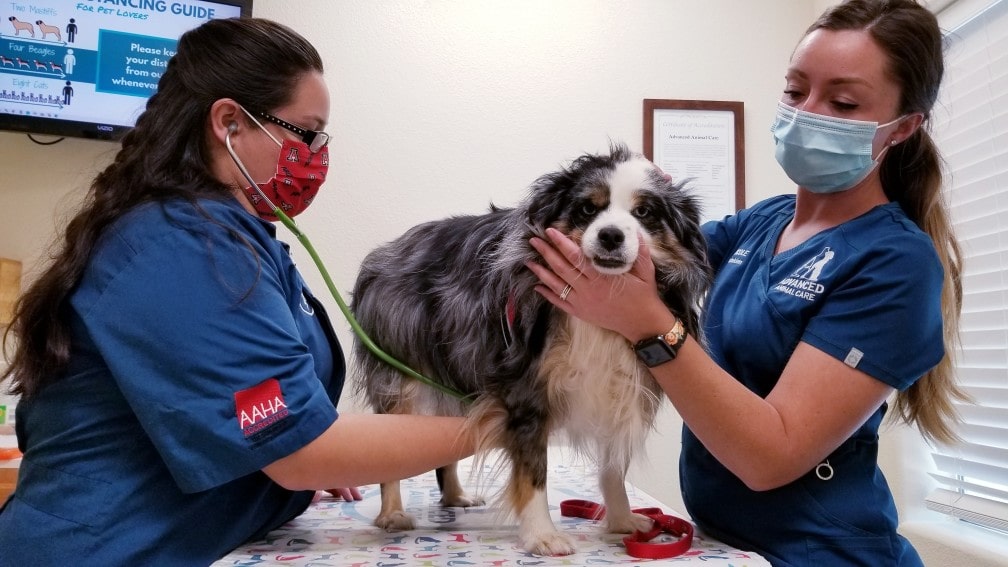Dogs are the most adorable pets but can suffer from several health-related complications. Periodontal disease is a common health issue in dogs. It is an inflammation or infection that results in the loss or weakening of the structures that support teeth.
Studies show that more than 80 percent of dogs show early signs of gum-related disease when they age about three years.
Why does periodontal disease happen?
The primary reason is when food and bacteria build up around the gums and form plaque. This condition then turns into calculus, which is also known as tartar.
Calculus is the culprit which causes inflammation of the gums and irritation. The condition is known as gingivitis and is the precursor to the early stages of periodontal disease.
With time, calculus formation builds under the gums to loosen up and separate from the teeth. These spaces are conducive to the growth of bacteria, and finally, the disease becomes irreparable.
It leads to loss of bone and tissue, and ultimately the teeth fall out. It can even lead to numerous other health issues and complications.
If you find these signs and symptoms of periodontal disease in your dogs, you must consult your veterinarian at the earliest. Your veterinarian can determine the right treatment plan and advice to sustain your dog’s oral health.
Please read on to find out the causes, symptoms, and appropriate treatment for periodontal disease in dogs.
Symptoms of Periodontal Disease in Dogs
In dogs, the symptoms of periodontal disease aren’t always noticeable. Sometimes, gum diseases are never apparent in the initial stages.
Hence, the issue progresses to a more uncontrollable advanced stage. So, it is the enormous responsibility of the dog owner to regularly inspect your pet’s mouth to ensure nothing abnormal or problematic.
Generally, periodontal disease sets in around one tooth. Then, slowly it progresses from there. In stage 1 of periodontal disease in dogs, there are signs of gingivitis. However, the teeth do not separate from the gums during this stage.
As the disease progress to the next stage, 25 percent of the connection between gums and the affected teeth gets lost. In stage 3 of periodontal disease, attachment loss can grow to about 30 percent.
In advanced periodontal disease or stage 4, the loss of attachment between teeth and gums is more than 50 percent. As a result, the gum tissue recedes, and then the roots of the teeth may get exposed.
Some of the most evident signs of gum disease in dogs that can ultimately lead to advanced periodontal disease if left untreated are discussed here. Bleeding gums or symptoms of blood in food, water bowls, or chew toys is one apparent sign of the disease.
The other visible signs are difficulty eating, irritability, loss of appetite, irritation in the mouth, bad breath, excessive drooling, and loose teeth.
Causes of Periodontal Disease in Dogs
Gum disease commonly leads to advanced types of periodontal disease in dogs, and the common cause is a build-up of bacteria and food that eventually hardens into plaque. Next, plaque can mix with minerals and further harden up in two to three days to build harmful calculus.
The dog’s immune system fights against the bacterial build-up that leads to inflammation. The complex calculus continues to form, pulling the gums further away from the teeth. It creates pockets where bacteria can grow. When abscesses start to develop, the tissue and bone deteriorate. As a result, the tooth loosens.
Certain dogs are at a higher risk of having advanced periodontal disease. For example, older dogs suffer from cases of severe gum disease. In addition, dogs have compromised immune systems are usually more likely to suffer from infection and less capable of fighting off bacteria.
Poor nutrition is one of the significant causes of gum disease. Thus, diet plays a primary role in it. In addition, grooming habits and chewing behaviors can cause bacteria to grow fast.
It happens more when dogs chew on dirty bones or toys or if they have a habit of licking themselves very often. The natural alignment of the teeth can often pose a problem also.
Sometimes small or toy breeds with crowded teeth are more prone to periodontal gum disease. But, again, oral hygiene is a crucial factor. If you do not look after your dog’s oral health, then there is a high chance of your dog developing gum disease.
Treatments for Periodontal Disease in Dogs
The treatment for periodontal disease in dogs starts with a comprehensive examination. X-rays conclude the stage and the degree of the damage. The most common thing that your vet might do is give antibiotics to your dog to prevent the spread of bacteria during dental work. After that, treatment depends on the result of the tests and the stage of the disease.
For the first two stages of periodontal disease, a vet does a systematic cleaning below and above the gums to remove plaque. An ultrasonic scaler is an effective device for removing calculus.
In addition, the vet can buff the teeth to fill in any cavity so bacteria cannot form plaque. In stages 3 or 4 of periodontal disease, cleaning may be given to your dog, but further treatment is still needed.
Different types of medical procedures are involved in the treatment. Subgingival curettage help in removing the problematic teeth or infected tissue.
It smoothens the root surface. Gingivectomy is another procedure in which the diseased gums are removed. Periodontal Surgery is another option to treat affected roots.
Conclusion
Each dog has its own needs and requirements for dental care. Therefore, the best way is to talk to your vet to know how often you need to brush your dog’s teeth in the best possible manner. Prevention is always better than cure, and it can avoid many problems.
FAQs
Q: What are the common signs of periodontal disease in dogs?
A: Common signs of periodontal disease in dogs include bad breath, red or swollen gums, tartar buildup, loose teeth, difficulty eating, and changes in appetite or behavior.
Q: How is periodontal disease diagnosed in dogs?
A: Periodontal disease in dogs is typically diagnosed through visual examination, dental probing, and dental X-rays. These help assess the severity of the disease and determine the appropriate treatment plan.
Q: Can periodontal disease in dogs be prevented?
A: Regular dental care at home, including tooth brushing and providing dental chews, along with routine professional dental cleanings by a veterinarian, can help reduce the risk of developing periodontal disease.
Q: What are the potential complications of untreated periodontal disease in dogs?
A: Untreated, periodontal disease in dogs can lead to various complications, including tooth loss, oral pain, difficulty eating, gum infections, abscesses, and even systemic health issues affecting organs such as the heart, liver, and kidneys due to the spread of bacteria from the mouth.

 DogExpress
DogExpress





















 in Chandigarh, India.
in Chandigarh, India. 
